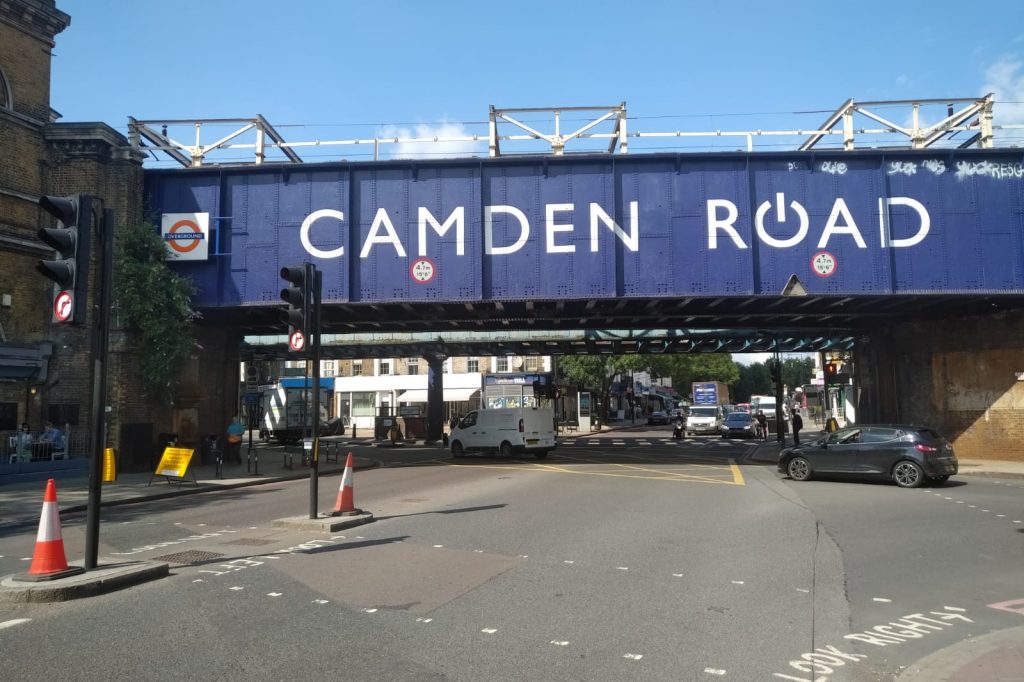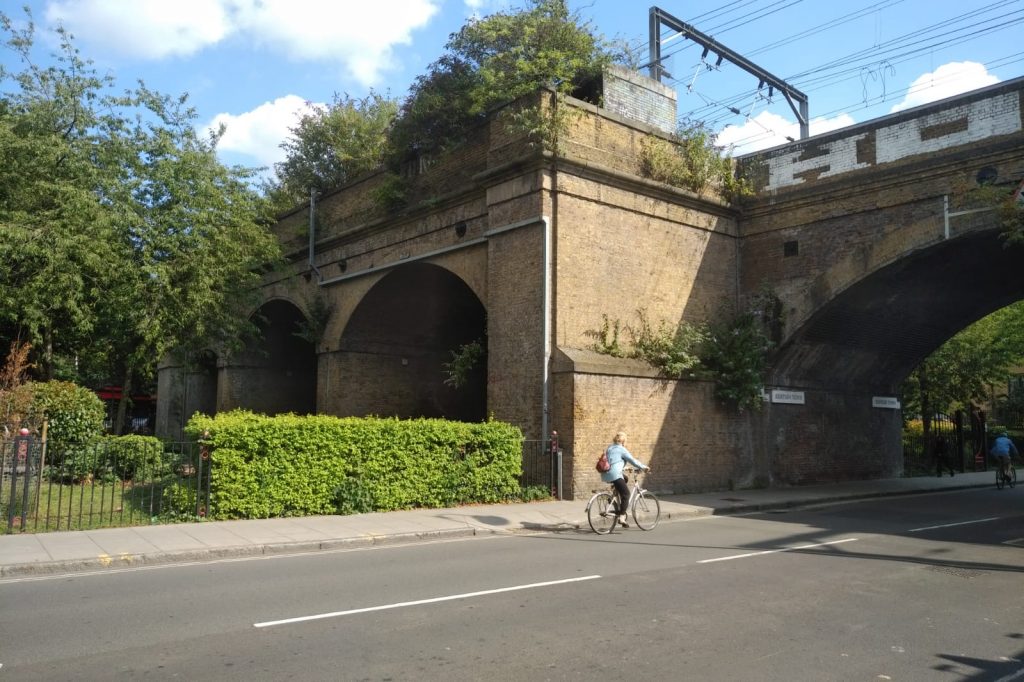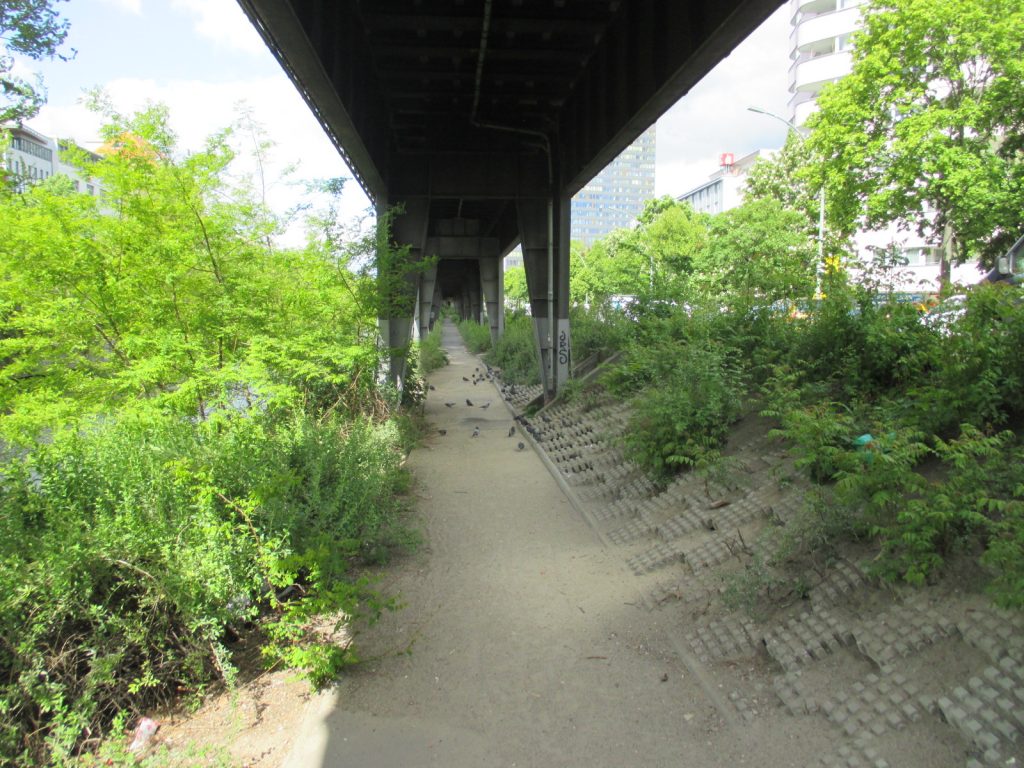Camden Highline
A 1.2km disused elevated railway track in North London may hold the key to repurposing obsolete Victorian infrastructure for the future needs of a growing city, according to the proponents of a crowdfunded scheme to build a new green space and transport link. The Camden Highline is an obvious attempt to replicate the success of New York’s High Line, which has attracted a number of global admirers and imitators (including Tokyo’s Daikanyama), but which its sponsors anticipate could also unlock new ways of urban living utilising AI and other tech applications.
The scheme, which remains at the feasibility stage, has attracted a range of backers from Camden Council to the UK Government, via the London Mayor Sadiq Khan (who has awarded funding from his Crowdfund London programme). The sections of disused track themselves lay alongside the existing North London Line of the London Overground network (most visibly at Camden Road station) and were taken up following the closure of Broad Street station on the former North London Railway in 1986 (other parts of the North London Railway then formed the initial basis for the Docklands Light Railway, while the East London Line section was later extended ahead of the London 2012 Olympics).

The project is the brainchild of Camden Town Unlimited Business Improvement District (BID), which chanced upon the concept following a series of blogs by researcher Oliver O’Brien of nearby University College London (UCL) calling for the disused line to be repurposed in the same way that the NYC High Line green corridor had become an urban asset for the city after he chanced on the trackbed via Google Street View. There are now 50 BIDs in London, thanks to a sustained effort by the previous Mayor, who threw his weight behind creating more of the local revitalization bodies in his second term manifesto.
If the project succeeds, this new arterial green space will connect the tourist hotspot of Camden Town with newly-redeveloped King’s Cross, which is gaining on Old Street’s so-called ‘Silicon Roundabout’ as London’s tech hub with major new headquarters for Google (including YouTube) and Facebook due to open, as well as the likes of Expedia (which includes Trivago and Hotels.com), Toyota Connected (its mobility start-up arm) and Samsung’s tech experience space KX LDN (which opened its doors this week).

These connections had not escaped the notice of the scheme’s sponsors, Camden Town Unlimited (which runs its own co-working space Camden Collective), who teamed up with the UK Government’s Connected Places Catapult and local tech firm Dark Matter Labs to create a ‘virtual innovation district’, Alternative Camden (leveraging the area’s long-held association with alternative culture), to investigate citizen-led urban solutions, such as smart digital contracts for device repairs and pop-up licenses for live events.
Equally, as further proof of concept for the Highline, the team have embarked upon an education programme with local schools (particularly those included in Camden Council’s Science, Technology, Arts and Maths programme, STEAM) to involve them in the design of the scheme, while a government-funded and volunteer-led ‘pocket park’ associated with the project will further underscore how the Highline can deliver for and benefit the local area.
Useful websites:
www.camdenhighline.com
alternativecamden.com
Berlin Radbahn
Since their advent European cities have grappled with the challenge of mobility. Having founded a famous company based on wireless telegraphy, in the 1880s Werner von Siemens proposed a plan for an elevated railway in Berlin, also based on that of New York, initially finding little favour with the city fathers until he was able to demonstrate its utility in Budapest. After this initial setback, the city’s U-Bahn was built a decade later, which remains to this day a key transport linkage. Since then, however, Berlin has revelled in its reputation as “poor, but sexy” (as coined by former mayor Klaus Wowereit) and now seeks to leverage this by positioning itself as one of (if not the) European tech hubs (the so-called ‘Berlin buzz’ the city’s marketers like to refer to). A project which has bubbled up from nowhere in the city’s Kreuzberg district points to how these linkages throughout history could solve a number of urban issues, from mobility to liveability.
The Radbahn (a play on the German for cycle, fahrrad, and U-Bahn) was conceived by a group of young architects and urban planners living in the city’s fashionably edgy Kreuzberg district, once spied by Google in an abortive bid to host a city headquarters there, its plans abandoned due to well-organised opposition from the city’s famous counterculture (it was subsequently forced to open a somewhat smaller city campus). Like the Camden Highline, the Radbahn has relied on crowdfunding to market its appeal to policymakers but has been more successful perhaps in unlocking funds to realise these ambitions, in the form of a 2.3m euros grant from the German interior ministry.
The stretch of 8.9km elevated trackway scheme aims to repurpose the existing grey space underneath the U1 line to shift away from the current desolate array of overgrown paths and car parks (often in multiple ownerships), to create a usable yet untapped piece of urban infrastructure providing a “green artery” for the city alongside areas which already contain distinct vibrancy in terms of cafes, shops and cultural facilities. If all goes to plan, the scheme could then see Berliners and visitors walk or cycle through the new waymarked corridor, rather than take buses or drive on the city’s roads. But while the scheme has a dedicated team of urbanists working largely pro bono (it is run as a non-profit, as is Camden’s), plus some funding goodwill from the Berlin Senate, getting the diverse range of city stakeholders to grant the necessary permissions is the main challenge (whereas in London the Camden Highline is only required to negotiate with Network Rail). As with the London project, the urbanists behind the Radbahn are already visualising its application in a city which could be dominated by autonomous vehicles by 2030.

Useful websites:
radbahn.berlin/en
fuckoffgoogle.de

